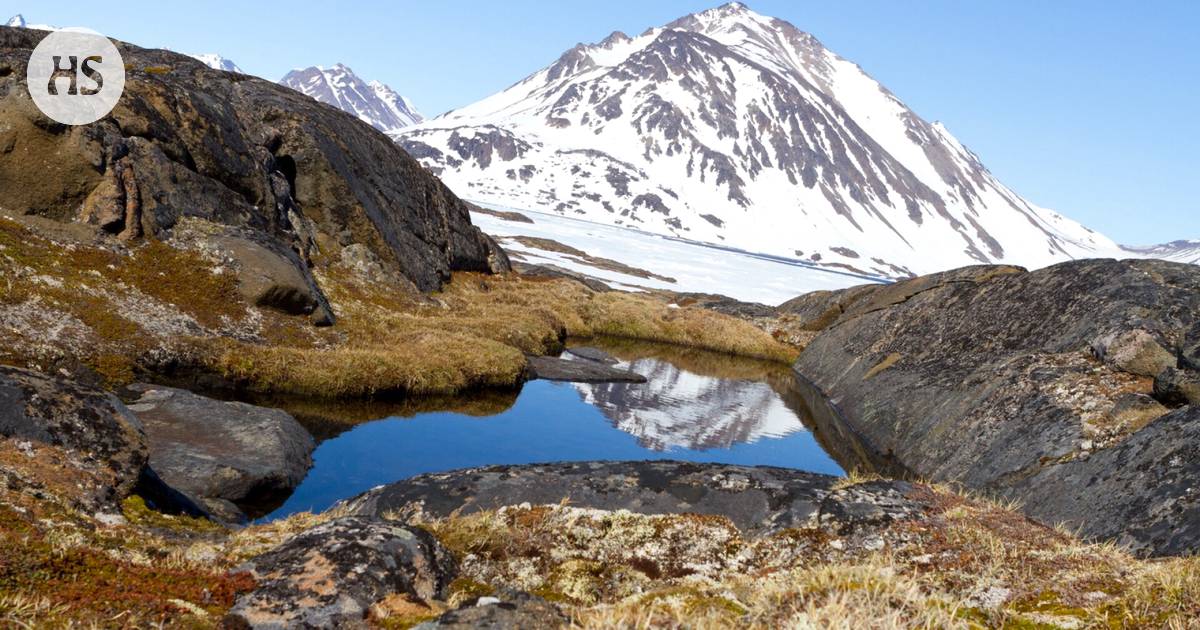Climate change|If Greenland’s history repeats itself, ocean levels may rise significantly.
The summary is made by artificial intelligence and checked by a human.
Greenland’s continental glacier is more vulnerable than previously thought.
Fossils were found in the ice drilling sample, which show that the glacier melted in the past.
Fossils tell us that the landscape of Greenland used to be ice-free and green.
The study strengthens the evidence of sea level rise.
of Greenland In the geological recent past, the ice cap has completely melted and there have been flora and insects in its area, says a new study.
A new analysis of an old ice core sample shows that the huge continental glacier is more vulnerable than long thought. Evidence of melting at the edges of the ice sheet has been found in the past.
The study was published Proceedings of the National Academy of Sciences in the journal. It was announced University of Vermont and researchers write about their findings on The Conversation. News about the results, among other things New Scientist.
The old landscape may return with climate change, scientists warn.
In research in 1993, an ice core sample drilled from a depth of about 3.2 kilometers in the middle of the continental glacier was reanalyzed.
To the researchers’ surprise, the sample contained soil that contained willow fiber, insect parts, fungi and a field poppy seed in excellent condition.
“These fossils are beautiful, but yes, now we’re going from the ditch to the spring,” the study’s co-lead author, a professor of natural resources at the University of Vermont Paul Bierman states in the announcement.
At The Conversation, Bierman and another lead author Halley Mastro write that the fossils show that the glacier has melted in the past and exposed the land beneath it for such a long time that it has had time to form topsoil and tundra.
“It tells us that the glacier is fragile and can melt again,” Bierman and Mastro write.
The microscope image shows, among other things, the spores of the mullein plant and the seed of the field poppy.
Fossils show that in the geologically recent past Greenland’s landscape was very different – “ice-free, practically green” according to Bierman.
This may end up again if nothing is done about greenhouse emissions. Professor of Geosciences at Penn State University who evaluated the research Richard Alleyn according to the results confirm the evidence of sea level rise during a time when the causes of warming were not particularly strong.
“This gives a warning about the kind of damage we can cause if we continue to warm the climate,” Alley says in a University of Vermont news release.
The melting of Greenland could raise the level of the oceans by more than 7 meters. Currently, the sea level rises by more than 2.5 centimeters every decade.
Bierman states in the release that the pace is also accelerating all the time.
Discovery partially dismantles the previous belief that the Greenland ice sheet has been in place for at least 2.6 million years.
The exact timing of the ice-free era is not yet known. Scientists estimate that the ice melted and Greenland turned green probably during the last million years.
Last year Bierman testified with his colleaguesthat the northwestern part of Greenland was ice-free about 400,000 years ago.
According to the researchers, the next step is to find out when exactly the glacier was missing from its current central part.
